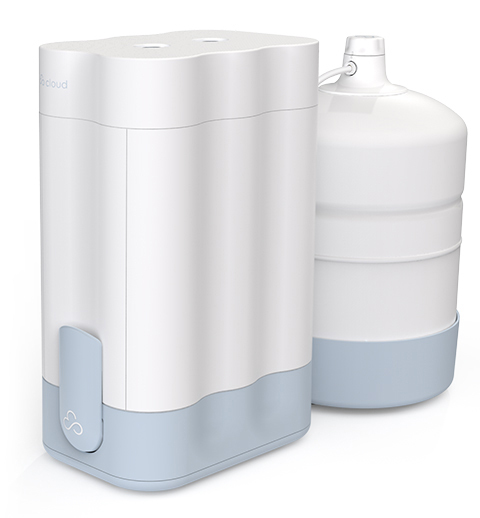Heavy metals are naturally occurring compounds in the Earth's crust.
Some of the most common heavy metals on the planet include tin, gold, copper, and silver, which are widely utilized in agriculture and industries.
Many of these metals are healthy for the human body in small amounts.
However, at high concentrations they can be dangerous, especially to young children and pregnant women.
Several heavy metals, like lead, cadmium, mercury, and arsenic, are on the World Health Organization's list of Chemicals of Major Public Health Concerns, and may all be detected in tap water.
Let's take a closer look at the nasty heavy metals that could be hiding in your tap water:
Manganese is a standard metal used in many aluminum alloys and an ingredient in unleaded gasoline, plumbing materials, battery cells, pyrotechnics, and as a component of tobacco smoke.
This heavy metal can be found at the surface and in groundwater.
It’s also an essential mineral that the body needs in trace amounts.
However, high doses can damage the nervous system.
We recommend having your water analyzed by a professional to ensure that it does not contain hazardous levels of manganese.
Cadmium is commonly used in metal plating, equipment, and batteries.
When consuming plants or animals that have been exposed to polluted water or soil, cadmium poisoning can occur.
The World Health Organization explains that cadmium typically enters our water through "impurities in the zinc or galvanized pipes and soldiers in fittings, water heaters, water coolers, and taps."
Short-term exposure to this heavy metal can induce nausea and vomiting.
Long-term exposure can result in cancer and kidney, liver and musculoskeletal damage.
Arsenic is a typical heavy metal found in the Earth's crust, caused by volcanic activity or other natural processes.
However, human activities such as pesticide manufacturing and mining have raised arsenic concentrations in groundwater.
Arsenic is a dangerous heavy element that can get into your water by natural erosion from rocks and soils, agricultural runoff from orchards, or waste streams from the metals and electronics industries.
Arsenic poisoning can induce skin discoloration, stomach discomfort, nausea and diarrhea.
- Neurological difficulties
- Cardiovascular illness
- Immune system abnormalities
- Cancer (bladder, lungs, skin, kidney, liver, or prostate cancer)
- Diabetes
Because aluminum is the most common metal in the Earth's crust, it is expected to be present in some form in most groundwater.
The relationship between aluminum intake and nervous system diseases is now being investigated.
In high amounts, selenium can cause skin pigmentation, poor teeth and gastrointestinal issues.
However, in small amounts selenium is a powerful antioxidant that protects against mercury, cadmium, and silver toxicity.
It’s all about balance with selenium!
Copper is the most frequent heavy metal found in drinking water.
This is because copper may leach into drinking water if pipes, faucets, and other plumbing fixtures degrade.
It can potentially enter your water supply if the groundwater is not adequately treated.
Copper is another essential nutrient, but too much of it can induce nausea, diarrhea, stomach pains, and potentially kidney and liver damage.
Copper deficiency, on the other hand, causes anemia, growth inhibition, and blood circulation issues.
Once again, it’s all about balance!
Mercury is a hazardous metal that exists in many forms in the environment.
The most prevalent form of mercury poisoning is connected to eating seafood.
- Lack of appetite
- Sleeplessness
- Indigestion
- Diarrhea
- Gum inflammation
- Tooth loosening
- Irritability
- Memory loss
- Muscular tremors
- Brain damage
Lead is toxic in any amount.
Corrosion of pipes or plumbing fixtures is the main source of contamination in drinking water.
Older homes built before 1986 are more likely to have corroded lead plumbing.
Small quantities of lead in your water can be harmful because it can build up in the body over time.
Ultimately, lead poisoning can cause damage to your brain, liver, kidneys, heart and bones.
Lead poisoning is especially dangerous for children and pregnant women.
How to Prevent Pipe Corrosion
Try these treatment methods to protect your pipes:
- If your water is acidic (has a low pH), you may want to neutralize it (raise it to pH 7) before it enters your home's plumbing system.
- For neutralizing acid water, special filters containing minerals such as calcium carbonate (CaCO3), commonly known as calcite, or magnesium oxide (MgO), sometimes known as magnesia, are available. These filters will make your water harder and must be backwashed on a regular basis.
- Another method of neutralization is to add sodium carbonate (NaCO3), often known as soda ash, to the water system.
- Chemicals such as polyphosphates and silicates may be injected into the plumbing system to prevent corrosion by forming protective coatings on plumbing components.
- If old pipes must be replaced, non-corroding plumbing materials such as polyethylene or polyvinyl chloride (PVC) may be utilized.
- Before drinking in the morning, run cold water for several minutes to flush out any metals that have collected overnight.
- Corrosion is exacerbated by high temperatures. As a result, hot water heaters should only be set as high as necessary. To be safe, avoid drinking or cooking with water from the hot water tap.
What About Bottled Water?
Purchasing bottled water on a regular basis is expensive!
On top of that, plastic bottles may leak contaminants into the water they hold.
Keep in mind that plastic bottles are still composed of chemicals and glue.
No matter how you look at it, there is still a danger of leaching!
That’s why filtering your own water at home is the most cost-effective, safe, and environmentally responsible choice.
How can heavy metals be successfully removed from drinking water?
Small amounts of dangerous metals can be removed via distillation, ion exchange, reverse osmosis, and activated carbon filtering.
Reverse osmosis is the most effective for at-home use.
Cloud RO Filters can remove up to 99.9% of harmful contaminants, including heavy metals.
Best of all, they’re affordable and fit right under your kitchen sink.
Click here to learn more.

